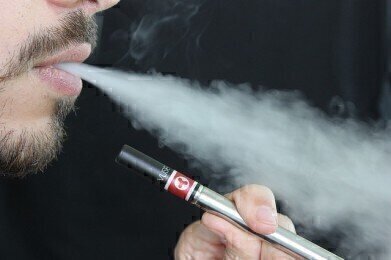Mass spectrometry & spectroscopy
Why You Should Check Your E-Cig for Sucralose
Jun 16 2019
While vaping is often marketed as a "healthy" alternative to smoking, new research from Portland State University suggests that e-cigarette liquids containing a synthetic sweetener known as sucralose can result in the inhalation of toxic chemicals.
More than 100 times sweeter than natural sugar, sucralose is often used to artificially sweeten food and beverages. It's sold to consumers under the brand name 'Splenda' and while it's generally considered safe for human consumption, researchers warn that it can become toxic when inhaled.
“Those evaluations are for eating, and it turns out the lung and the stomach are not the same target organ,” warns David Peyton, a chemist at Portland State University and co-author of the study.
E-cigarette sucralose releases carcinogenic toxins
As sucralose is broken down it produces poisonous organochlorines that are often found in pesticides. Sucralose can also increase levels of aldehydes, toxic electrophilic compounds that are linked to certain neurodegenerative diseases and some types of cancer.
The findings were reported in the journal Chemical Research in Toxicology and explain how Peyton and his team investigated the toxic effects of heating sucralose via the metal coils found inside e-cigarettes. To test the theory Peyton and his team added sucralose to various e-liquids and used a pump to vaporise them using consumer e-cigarette devices. The puffs of vapor were then captured and analysed, with the findings revealing that adding sucralose to popular e-liquid solvents such as glycerol and propylene glycol significantly increased levels of toxic aldehydes, which can cause lung irritation. The team also detected trace amounts of organochlorines, which are associated with serious toxicological effects.
Sucralose laced with lung-irritating chlorine atoms
Unlike natural sugar, sucralose swaps three key hydroxyl groups for chlorine atoms. When sucralose is heated and broken down the atoms release chloride ions that bind with other chemicals and can change other reactions occurring during the vaping process. The findings suggest that when vaped, sucralose breaks down and forms hydrochloric acid which then triggers the chemical reactions needed to produce aldehydes. The team also note that hydrochloric acid can reduce the nicotine content of e-cigarette liquids, which means that when sucralose is added vapers need to inhale more e-liquid to enjoy the same hit of nicotine.
To carry out the study, the team relied on the latest HNMR spectroscopy, ion chromatography and gas chromatography technology, combined with detection by mass spectrometry or flame ionisation detector. For a closer look at the latest industry developments don't miss 'Employing the Power of Gas Chromatography/Mass Spectrometry in the Field'.
Digital Edition
Lab Asia Dec 2025
December 2025
Chromatography Articles- Cutting-edge sample preparation tools help laboratories to stay ahead of the curveMass Spectrometry & Spectroscopy Articles- Unlocking the complexity of metabolomics: Pushi...
View all digital editions
Events
Jan 21 2026 Tokyo, Japan
Jan 28 2026 Tokyo, Japan
Jan 29 2026 New Delhi, India
Feb 07 2026 Boston, MA, USA
Asia Pharma Expo/Asia Lab Expo
Feb 12 2026 Dhaka, Bangladesh



















